Is Your Scalp Trying to Tell You Something? Here Are the Signs
Introduction
- Healthy hair starts on the scalp, yet we frequently disregard its warning signs. Your scalp may be begging for assistance if it is experiencing excessive oiliness or inexplicable hair loss. Before it’s too late, let’s figure out the symptoms of an unhealthy scalp.
- Shampoos, serums, masks, and oils are frequently the first products that come to mind when discussing hair health, but we rarely consider the scalp as the actual source of the issue.
- The scalp is the living ground where each hair strand is created, fed, and nurtured, much like the soil determines a plant’s health.
- No matter how costly your hair care regimen is, your hair will show it if your scalp is unhealthy.

- An estimated 60% of scalp problems go undiagnosed until the hair starts to thin or fall out significantly, according to trichologists, or specialists in hair and scalp.
- One of the main causes is that the symptoms are frequently first minor, such as an itching spot here, a dry patch there, or simply the sensation that “something is wrong.”
- Sadly, these warning indicators are frequently disregarded or self-treated with severe remedies that worsen the situation.
- The good news is that, if you notice the symptoms early, the scalp responds very well to treatment.
- This blog will teach you how to recognise the symptoms of an unhealthy scalp and how to react to them.
- We’ll also examine both internal and external factors, such as hormone changes, poor diet, excessive washing, and product buildup.
- What makes this guide trustworthy? due to the fact that it is based on a blend of practical hair care formulation experience, research supported by science, and actual customer insights.
- This isn’t just general advice; it’s well-informed, useful knowledge that you can use whether you’re dealing with ongoing problems or simply want to make sure your scalp remains healthy throughout time.
- Just as you wouldn’t disregard facial breakouts, you shouldn’t neglect irritation or imbalance on your scalp. Your scalp deserves the same level of care as your skin.
- Let’s begin by learning to pay attention to the whispers on your scalp before they become screams.
1. Constant Itching and Discomfort
- Why it occurs: Dryness, product accumulation, or even an allergic response could be the cause.
- Persistent itching is one of the most prevalent and annoying symptoms of an unhealthy scalp.
- Although the odd itchy scalp is common, a persistently irritated or painful scalp is a warning sign that should not be disregarded.
- Knowing the cause of that itch can help you, as a formulator or even as a conscientious consumer, identify the source of the issue.
- Itching is a symptom—your scalp’s method of telling you that something is wrong—rather than a disease in and of itself. From minor and controllable issues to more significant ones, the causes can vary.
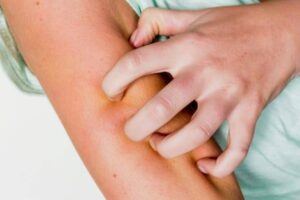
- Product Development
- Product accumulation is one of the main causes of itchy scalps. Heavy oils, silicones, artificial perfumes, and other substances that can build up on the scalp over time are found in many commercial hair products.
- This layer traps bacteria, clogs pores, suffocates the scalp, and alters the pH balance. The outcome was soreness and inflammation.
- Buildup can be the cause if you consistently use styling lotions, dry shampoo, or even natural oils without routinely cleaning your scalp.
- This accumulation may eventually turn into a haven for germs and yeast, making the itching worse.
- Dehydration and Dryness
- Conversely, severe itching can also result from a dry scalp. A parched scalp can flake, split, and itch, just like dry skin on your arms or face.
- This is most prevalent in the winter or when using strong shampoos that remove natural oils.
- It is well recognised that substances like alcohols, sulphates, and artificial colouring can have this drying effect.
- Natural oils from the scalp don’t always make it to the ends of hair in those with curly or textured hair, which makes the scalp even more vulnerable to dryness and irritation.
- Contact Dermatitis: Allergic Reactions
- Allergies to hair care products are another frequently disregarded factor.
- This condition, called contact dermatitis, happens when an ingredient—typically colourants, artificial perfumes, or preservatives—causes your scalp to respond.
- A response could be the reason if the itching is accompanied by redness, burning, or soreness.
- Because of this, patch testing is crucial before adding a new product to your hair regimen, particularly if you have a history of allergies or sensitive skin.
- What to Do: Proper Scalp Relief
- The good news is that switching to moderate, sulfate-free products can solve a lot of itchy issues. SLS and SLES are examples of harsh sulphates that deplete the scalp’s protecting oils, causing dryness and excessive sebum production. Select gentle, pH-balanced shampoos that contain calming components such as neem, tea tree, calendula, or aloe vera.
- Regularly cleaning your scalp is important, particularly if you use styling products or live in an area with pollution. Using clay masks or gentle exfoliants like salicylic acid, a weekly clarifying wash can help cleanse the scalp without stripping it.
- Refrain from scratching, even if it feels good. It can weaken the skin’s defences against infection and exacerbate inflammation.
2. Flaking or Dandruff
- Recognise the differences between oily and dry dandruff; each has its own causes and remedies.
- How to handle: Anti-dandruff shampoos or exfoliating scalp scrubs containing neem or zinc can be beneficial.
- Two of the most prevalent scalp complaints are dandruff and flaking, but they are also among the most misinterpreted. Although many individuals believe that all flakes are the same, oily dandruff and dry scalp flakes are two very different disorders that call for different treatments. If you misdiagnose them, your scalp may get worse rather than better.

- Knowing the Difference Between Oily Dandruff and Dry Flakes
- Dry Particles
- It’s likely that you have a dry scalp if you notice tiny, light, white flakes falling from your head onto your shoulders, especially after scratching. Skin peeling from dehydration is the cause of these flakes. Additionally, your scalp may feel sensitive, tight, and itching. Among the causes of dry scalp are:
- Sulfate-based, harsh shampoos
- Using hot water or washing too much
- Dry or frigid climates
- inadequate nutrition or hydration
- Use of styling products with alcohol in them
- (Seborrhoeic Dermatitis) Oily Dandruff
- However, an overabundance of yeast (usually Malassezia), which grows well in greasy conditions, is the cause of oily dandruff. Thick, yellowish or grey flakes that are oily to the touch and have a propensity to adhere to the scalp are the outcome. Redness, inflammation, and chronic itching are common symptoms of this illness. Among the triggers are:
- Overproduction of oil
- Unbalanced hormones
- Anxiety
- Humidity and pollution
- Poor hygiene of the scalp
- Selecting the appropriate therapy requires knowing what kind of flake you’re dealing with. Applying oil to oily dandruff can exacerbate the condition, while using clarifying treatments to further peel dry scalp will exacerbate flaking.
- Handling: Customised Approaches for Every Kind
- For flakes of dry scalp, concentrate on:
- hydrating shampoos devoid of alcohol and sulphates
- Applying nourishing oils sparingly, such as coconut, jojoba, or argan
- Hydrating serums or masks containing hyaluronic acid, panthenol, or aloe vera
- Using less hot water and washing less frequently
- For greasy dandruff, use:
- Shampoos that contain zinc pyrithione, ketoconazole, salicylic acid, or neem to prevent dandruff
- Once a week, exfoliate your scalp using fruit enzymes or gentle scrubs.
- Tea tree oil, when diluted, has antifungal qualities.
- Steer clear of occlusive styling products and thick oils that might harbour yeast.
- Once or twice a month, a scalp detox treatment can help eliminate buildup and restore the scalp flora, making it a viable intermediate option for both kinds.
- Pro Tip: Don’t Be Aggressive, Be Consistent
- Avoid switching between products in the hopes of finding relief right away. Results from most scalp treatments take two to four weeks to manifest. Patience and consistency are essential. Additionally, refrain from excessive exfoliation or scratching, since these actions might weaken the scalp barrier and exacerbate inflammation.
- The bottom line
- Despite their small size, flakes can tell you a lot about the health of your scalp. Recognise if you have dandruff or dryness, then use the appropriate products to address it. Healthy, colourful hair and a flake-free scalp are entirely possible with the correct care.
Why, only one day after bathing, does your scalp feel oily? This could indicate improper product use or unbalanced sebum production.
The solution is to prevent over-washing and use clarifying shampoos once a week.
Despite using a “clean” shampoo and avoiding heavy oils, does your hair still feel oily the day after washing? You’re not by yourself. One of the most ignored symptoms of scalp imbalance is excessive oil production, which can be perplexing and annoying. In actuality, though, your scalp is attempting self-defence and can be overcompensating for anything you’re doing incorrectly.Why, only one day after bathing, does your scalp feel oily? This could indicate improper product use or unbalanced sebum production.
The solution is to prevent over-washing and use clarifying shampoos once a week.
Despite using a “clean” shampoo and avoiding heavy oils, does your hair still feel oily the day after washing? You’re not by yourself. One of the most ignored symptoms of scalp imbalance is excessive oil production, which can be perplexing and annoying. In actuality, though, your scalp is attempting self-defence and can be overcompensating for anything you’re doing incorrectly.
- Why, only one day after bathing, does your scalp feel oily? This could indicate improper product use or unbalanced sebum production.
- The solution is to prevent over-washing and use clarifying shampoos once a week.
- Despite using a “clean” shampoo and avoiding heavy oils, does your hair still feel oily the day after washing? You’re not by yourself. One of the most ignored symptoms of scalp imbalance is excessive oil production, which can be perplexing and annoying. In actuality, though, your scalp is attempting self-defence and can be overcompensating for anything you’re doing incorrectly.
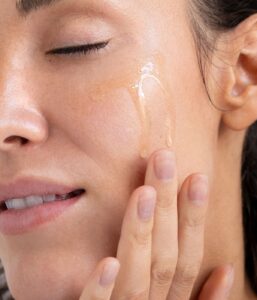
- The Reason Your Scalp Gets Oily So Easily
- Sebum, an oily fluid that helps hydrate and preserve your skin and hair, is naturally produced by the scalp. This oil is released in precisely the proper quantity to maintain the equilibrium of your scalp when it is healthy. However, if this mechanism is out of balance, it may result in:
- Grease within hours of washing
- Hair that is limp and flat at the roots
- A congested or itchy scalp
- A propensity towards accumulation or dandruff
- This overproduction is frequently caused by the following:
- Excessive Hair Washing
Ironically, washing your hair too frequently is one of the most common causes of oily scalps. - You deprive your scalp of its natural oils each time you use a harsh shampoo, particularly one that contains sulphates.
- A vicious cycle of grease and dryness results from the sebaceous glands going into overdrive to replenish the lost oils.
- Making Use of Inappropriate Products
Being lightweight isn’t necessarily a good thing. Certain “moisturising” shampoos and conditioners contain occlusives, silicones, and film-formers that coat the scalp and retain oil. - Other times, applying thick oils or butters to the scalp can smother the pores and cause your body to create extra oil in an attempt to restore equilibrium.
- Stress or Hormonal Shifts
Androgens, the male hormones found in both men and women, are frequently associated with increased sebum production. - Stress, menstruation, PCOS, puberty, and other conditions can affect hormonal activity and cause your scalp to become oilier than usual.
- Lifestyle and Environmental Aspects
Oil buildup can be exacerbated by pollution, heat, humidity, soiled bedding, or even frequent hair contact. Similar to your face, your scalp absorbs and responds to its surroundings since it is skin.
- Excessive Hair Washing
- Resetting the Sebum Balance is the solution.
- Rebalancing your scalp is more important than eliminating all of its oils. Here’s how:
- Once a week, use a clarifying shampoo. To get rid of buildup without over-drying, look for mild solutions that contain salicylic acid, kaolin clay, or apple cider vinegar.
- Don’t wash every day. Every two to three days, try shampooing. This enables your scalp to naturally control how much oil it produces.
- Choose shampoos with a pH balance and no sulphates. These cleanse without compromising the protective layer of your scalp.
- Don’t use conditioner on the roots. Only cut it mid-length to the ends.
- To assist manage oil between washes, apply a scalp toner or mist containing witch hazel, tea tree, or rosemary.
- Expert Advice: Minimise
- Your scalp may create more oil in defence the more forcefully you attempt to “degrease” it. Instead, concentrate on calming and equilibrium. Train your scalp instead of fighting it.
- The bottom line
- Your scalp may be unbalanced rather than filthy if it becomes greasy a day after cleaning. Your scalp can be gently reset with the correct products and regimen to return to its natural condition of being clean, relaxed, and properly hydrated.
4. Scalp Acne or Pimples
- What it means: Clogged pores or blocked follicles brought on by too much perspiration, oil, or hair products.
- Prevention advice: Avoid using a lot of styling products, keep your scalp clean, and exfoliate it occasionally.
- Our faces typically come to mind when we think of acne. However, your scalp is just as susceptible to outbreaks as your skin. Pimples or acne on the scalp can be uncomfortable, bothersome, and challenging to see under your hair. Frequent breakouts are an obvious sign that something is wrong with the environment of your scalp, even though some people ignore them as innocuous or sporadic.

- What Leads to Acne on the Scalp?
- similar to facial acne, pimples on the scalp arise when a combination of oil, perspiration, dead skin cells, or product residue clogs the hair follicles, or pores.
- The accumulation of this material provides the ideal conditions for the growth of bacteria, particularly Cutibacterium acnes.
- The outcome? Acne that resembles painful cysts, whiteheads, or red pimples along the hairline, crown, or nape of the neck.
- Excessive Production of Sebum
- Particularly if you don’t wash your hair often enough, an oily scalp is more prone to retain dead skin and draw microorganisms. Stress, hormones, and warm weather can all increase the production of oil.
- Overabundance of Products
- The silicones and synthetic waxes found in many styling products, such as gels, serums, dry shampoos, and leave-in sprays, coat the scalp. Over time, this accumulation suffocates the skin by clogging follicles. Breakouts can also be caused by comedogenic substances like petroleum or some plant butters.
- Sweat and Unsanitary Conditions
- Sweat and heat can combine with sebum to form blockages, especially if you exercise frequently or live in a humid climate. Long-term use of caps or helmets can exacerbate the issue by trapping perspiration and microorganisms.
- Failure to Wash Following Oil Treatments
- Although oiling the scalp might be beneficial, congestion can result from leaving oil on the scalp for an extended period of time or from improperly rinsing it off. If your scalp is already irritated or prone to acne, oils are the last thing you need because they trap heat, dust, and bacteria.
- Prevention Advice: Maintaining a Clear Scalp
- Fortunately, with the correct practices, scalp acne is treatable and frequently reversible:
- Wash frequently with a gentle, sulfate-free shampoo to get rid of perspiration, grime, and product accumulation.
- To unclog pores, exfoliate the scalp once a week with a mild scrub or a product containing salicylic acid. Keep an eye out for components like neem, witch hazel, or tea tree oil.
- Steer clear of or use styling products sparingly, especially in the area around the roots.
- Brushes, combs, and pillows should all be cleaned on a regular basis to prevent the spread of bacteria.
- Steer clear of picking and scratching, as these actions can spread bacteria and leave scars.
- Try to rinse your scalp after working out or perspiring, or at the very least, use a gentle herbal rinse to get rid of the dirt.
- Pro Tip: Address Spots Just Like You Would Acne on Your Face
- Apply a tiny bit of diluted tea tree essential oil or aloe vera gel to the afflicted region if your scalp outbreaks are persistent. Dermatologists may suggest medicinal shampoos containing ketoconazole or benzoyl peroxide in more severe cases.
- The bottom line
- Acne on the scalp is more than just a superficial problem; it’s your scalp’s way of informing you that it’s clogged and needs to be cleared out. Stronger, healthier hair can be achieved by restoring the clarity and comfort of your scalp with appropriate washing, exfoliation, and thoughtful product use.
5. Redness and Inflammation
- Underlying causes: Could be signs of allergic responses, dermatitis, or infections.
- When to consult a physician: if inflammation hurts, lingers, or spreads.
- Scalp redness and inflammation are frequently ignored until they start to cause pain, discomfort, or obvious irritation. Persistent inflammation is a dangerous indication that your scalp is under stress, even though it may be caused by intense scratching or sun exposure. More serious problems including hair thinning, follicle damage, or even infections may result if treatment is not received.
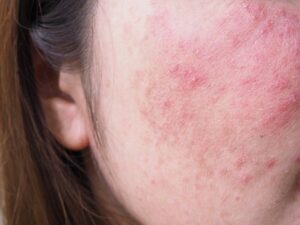
- Comprehending Redness: What’s Actually Going On?
- Your scalp uses redness as a natural inflammatory reaction to let you know when something is amiss. Inflammation is the result of your immune system sending blood and immune cells to a particular location to fight off perceived harm, whether it is caused by an internal imbalance or an external irritation.
- Let’s dissect the most prevalent root causes:
- Dermatitis (e.g., seborrhoeic or scalp dermatitis)
- Many people suffer from this chronic inflammatory illness, which is particularly common in greasy places like the scalp. Usually, red, itchy patches with oily, yellowish flakes are the first signs of seborrhoeic dermatitis. Stress, hormonal shifts, cold weather, and yeast overgrowth (Malassezia) are some examples of triggers.
- Contact Dermatitis and Other Allergic Reactions
- Ingredients in shampoos, dyes, and styling products cause allergic responses in a lot of people without their knowledge. Synthetic scents, sulphates, parabens, formaldehyde-releasing preservatives, and even certain natural essential oils are examples of common irritants. The outcome? redness, burning, itching, or pimples shortly after using the product.
- Psoriasis on the scalp
- Thick, crimson patches with silvery scales are the result of an autoimmune disease. It frequently shows up on the scalp’s crown, behind the ears, or along the hairline. Psoriasis may be inherited, brought on by stress, cold temperatures, or certain drugs.
- Fungal or Bacterial Infections
- You may have tinea capitis, a fungal scalp infection, or folliculitis, a bacterial infection, if your scalp is red, painful, warm to the touch, and maybe leaking or crusting. In order to prevent more consequences, these infections must be treated promptly.
- Physical Exacerbation
- Redness can occasionally be brought on by excessive exfoliation, tight haircuts, scratching, or wearing tight headgear. Repeated rubbing can result in long-term harm, even though this kind of redness normally goes away on its own.
- When to Consult a Physician
- It is important to pay attention to redness, particularly when it is:
- Hot or painful to touch
- accompanied by pus or oedema
- lasting more than a week
- extending to further regions (such as the forehead or neck)
- resulting in scabbing or hair loss
- Seeking advice from a dermatologist or trichologist is essential in these situations. Depending on the cause, they could suggest prescription medications such as antibiotics, antifungal drugs, anti-inflammatory lotions, or medicated shampoos.
- Expert Advice: Maintain a Scalp Journal
- Make a note of the items, activities, and weather changes that may be causing the redness, as well as when it occurs. This can assist in spotting trends and possible irritants or allergens.
- The bottom line
- Inflammation and redness on your scalp are warning signs from your body. Don’t ignore it. Proper diagnosis and treatment can avoid long-term harm and restore the health of your scalp, regardless of whether it’s an infection, underlying skin disease, or product reaction.
6. Hair Fall or Thinning from the Roots
- Could it be your scalp? Hair at the root may become weak due to poor circulation or accumulation on the scalp.
- Rejuvenate your roots with dandruff treatments, nourishing oils, and scalp massages.
- People of all ages, genders, and hair kinds are concerned about hair loss. But it’s important to consider whether your scalp is causing your hair loss before blaming just stress, hormones, or heredity. Yes, in a lot of instances.
- Every hair strand starts its existence on the scalp, thus if the scalp is damaged, your hair has no chance. Your scalp care regimen determines the strength of the foundation supporting the health of your hair, from accumulation that clogs follicles to poor blood flow that degrades root nourishment.
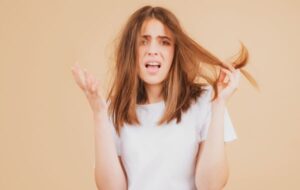
- The Impact of Your Scalp on Hair Loss
- Accumulation Prevents Hair Growth
Hair follicles can get clogged by a layer of dead skin cells, environmental contaminants, and product residues that accumulate on the scalp. This chokes the hair shaft at its base and increases the likelihood that it will fall out by preventing oxygen and nutrients from getting to the root.
- Accumulation Prevents Hair Growth
- Weak Roots Result from Poor Circulation
- Your hair roots depend on the blood’s continuous delivery of proteins, minerals, and oxygen. This supply is diminished by poor circulation, which can be brought on by stress, tension, inflammation, or inactivity. Thinning results from hair entering the shedding phase (telogen) earlier than it should when roots are malnourished
- Untreated Conditions of the Scalp
- An inflammatory scalp environment is produced by diseases such as psoriasis, seborrhoeic dermatitis, and dandruff. Prolonged inflammation shortens the natural hair growth cycle and weakens follicles. It might potentially cause follicular miniaturisation, which is a sign of irreversible thinning, if treatment is not received.
- Lifestyle and Hormonal Aspects
- Thyroid imbalance, androgenic alopecia, and nutritional deficiencies can all show up more strongly when the scalp is out of balance, even if they are not directly produced by the scalp. The harm that these elements inflict at the root level is exacerbated by a stressed scalp.
- Rejuvenate Your Roots: What Works
- The good news? By implementing a more deliberate care regimen, you can increase the health of your scalp and decrease hair loss:
- Massages for the Scalp
- Dormant follicles can be awakened and blood flow stimulated with just 5–10 minutes per day. Apply light circular pressure with your fingertips or a scalp massager.
- Healthy Oils
- Use oils that are gentle on the scalp, such as pumpkin seed oil, amla, rosemary, or bhringraj. These support the follicle, reduce inflammation, and fortify the roots. To avoid accumulation, always wash off oils within 6 to 8 hours.
- Take Care of Dandruff Right Away
- Make use of anti-dandruff shampoos that contain tea tree oil, zinc pyrithione, or neem. Infection and flakes can be removed to promote better growth and lessen inflammation.
- Weekly Exfoliation of the Scalp
- To get rid of buildup, extra sebum, and dead cells, use a gentle exfoliator or a clay-based scalp mask. This helps follicles to breathe and revitalises the environment of the scalp.
- Support for Nutrition
- For healthy hair at the root, make sure your diet contains protein, biotin, iron, omega-3 fatty acids, and vitamin D.
- Expert Advice: Hair Loss Is Frequently a Postponed Reaction
- Your current hair loss may be the result of scalp problems that started six to eight weeks ago. Maintain a regular regimen and wait for your scalp to heal before anticipating any changes.
- The bottom line
- Examine your scalp as well as your hair if it is thinning or falling out from the roots. Even the weakest roots can be revitalised and better, stronger hair growth can be initiated with a clean, nourished, and well-circulated scalp.
7. Foul Odor from the Scalp
- What it might indicate: Product accumulation, bacterial or fungal diseases, or inadequate personal hygiene.
- Easy fixes: Rinse your hair well after using dry shampoos and herbal cleansers.
- Like the rest of your skin, your scalp naturally smells. However, it’s time to take more note if you’ve detected a lingering, unpleasant odour emanating from your hair or scalp, even right after washing. In addition to being a hygienic concern, scalp odour may indicate an illness, microbial imbalance, or product excess.
- Let’s dissect the situation and choose the best course of action.
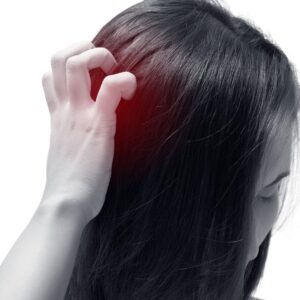
- What Leads to Odour on the Scalp?
- Product Development
- Hair products such as oils, serums, leave-in conditioners, and sprays can accumulate on the scalp over time. These combine with perspiration, sebum, and pollutants from the environment when they are not thoroughly rinsed away, leaving behind a residue that may start to smell. The smell gets stronger when you combine it with heat, humidity, and unclean pillowcases.
- The Buildup of Sweat and Oil
- Sebum, or natural scalp oil, and excessive perspiration can make the ideal environment for germs to grow if you exercise regularly or live in a warm region. In contrast to your armpits, your scalp is frequently covered in hair, which retains moisture and heat and hinders skin breathing.
- Fungal or Bacterial Infections
- A fungal overgrowth like Malassezia or a microbial illness like folliculitis may be the more serious cause of scalp odour. These infections can cause redness and pimples, and they frequently have a pungent, sour, or musty smell.
- Ineffective Rinsing Method
- Many people concentrate on shampooing but don’t rinse their hair well enough, especially behind their ears or close to their neck. Unpleasant odours and scalp discomfort might result from washing residue or leftover products.
- Unsanitary Scalps or Excessive Oiling
- While using too much oil or leaving it on for longer than 24 hours can clog pores and retain perspiration, grime, and bacteria, oiling your hair can help nourish the scalp. The outcome? A sour rather than sweet-smelling scalp
- Easy Ways to Revitalise Your Scalp
- Proper cleaning and scalp care are the first steps in controlling odours:
- Use Ayurvedic or herbal cleaners instead.
- Seek out shampoos that contain apple cider vinegar, tulsi, rosemary, neem, reetha, or tea tree oil. Without the use of harsh chemicals, these natural components help balance the flora on the scalp and lessen odour.
- Apply dry shampoo with awareness.
- A temporary solution to absorb oil and lessen scalp odour is to use dry shampoo. Just make sure to wash it off within a day or two to prevent accumulation.
- Rinse your hair well.
- Make sure you rinse the shampoo and conditioner off your hairline and scalp completely. To make sure there is no residue left behind, use lukewarm water and give it a minute more.
- Reduce the Use of Heavy Products
- Steer clear of putting too many styling products on top, especially close to the roots. If you have to style, choose for non-comedogenic, lightweight formulations.
- Clean brushes, combs, and pillowcases. Every week
- Contaminated accessories can also cause scalp odour. To prevent reintroducing bacteria, clean everything that frequently comes into contact with your scalp.
- Expert Advice: Include a Herbal Rinse Every Week
- Use diluted apple cider vinegar or rosemary tea to make a scalp rinse. Pour it over your scalp after shampooing and leave it there for two to three minutes before washing it off. This aids in pH reset and odour neutralisation.
- The bottom line
- In addition to being unsightly, a bad-smelling scalp is an obvious indication that your scalp environment is out of balance. You may rebuild your confidence and freshness from the ground up with natural therapies, good hygiene, and mild detoxification.
8. Pain or Tenderness When You Touch Your Scalp
- Not typical: An underlying infection or inflammation is frequently indicated by pain.
- Don’t overlook this: If soreness doesn’t go away after practicing better hygiene, get medical attention.
- It shouldn’t hurt your scalp. However, many people feel discomfort, soreness, or agony when they brush their hair, touch their scalp, or even just lie on a pillow. Even while it’s simple to write this off as “just sensitivity,” scalp pain is never typical. It’s your body’s method of alerting you to the presence of something more serious, usually infectious or inflammatory.
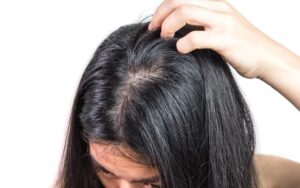
- What Causes Your Scalp Pain?
- Trichodynia, the medical term for scalp pain, can be mild, severe, or throbbing. The entire scalp may experience this ache, or just specific spots may. These are the most typical reasons:
- Infection or inflammation
- Tenderness is frequently caused by inflammatory scalp disorders such psoriasis, seborrhoeic dermatitis, or folliculitis. These disorders make the scalp unpleasant to the touch by causing oedema in and around the hair follicles. Redness, heat, or even pus-filled pimples may accompany the discomfort in bacterial or fungal infections.
- Chemical Burns or Product Reactions
- Your scalp can be reacting if you recently used a bleach, relaxer, hair dye, or other harsh chemical-based product. Burning, stinging, and a tight, painful scalp are all symptoms of chemical irritation. Healthy hair development may occasionally be momentarily stopped when the damage spreads to the follicles.
- Tension and Tight Hairstyles
- Too-tight ponytails, braids, buns, or hair extensions strain your scalp by pulling on your hair follicles. Pain, redness, and in rare instances, traction alopecia—a type of hair loss brought on by excessive pulling—can be the results of this tension.
- When Is the Right Time to See a Doctor?
- It is important to pay attention to scalp soreness, particularly when:
- Pain lasts longer than a few days.
- The region is bloated, red, or fluid-oozing.
- You observe open sores, scabbing, or hair loss.
- There is no alleviation from over-the-counter remedies.
- The tenderness is intense enough to interfere with daily activities or sleep.
- It is best to speak with a trichologist or dermatologist in these situations. They are able to identify the underlying reason and provide suitable remedies, such as topical antibiotics, antifungal drugs, corticosteroids, or calming prescription creams.
- Pro Tip: Reduce Scalp Stress and Enhance Hygiene
- Consider using a mild, anti-inflammatory shampoo; look for components such as salicylic acid, calendula, aloe vera, or chamomile. Steer clear of tight haircuts and discontinue using any new products that might have caused the reaction.
- The bottom line
- Your scalp’s loudest scream for assistance is pain. Don’t disregard a sore or tender scalp, regardless of the cause—infection, inflammation, or stress. Simple routine adjustments and prompt diagnosis can reduce discomfort and shield your scalp and hair follicles from long-term harm.
9. Scalp Feels Tight or Dry
- Why it’s important Tightness may be a sign of malnutrition or dehydration.
- Hydration advice: Limit heat style, use scalp serums, and drink plenty of water.
- At first, a dry or tight scalp might not seem like a big deal, but it’s one of the first indications that something is amiss with the health of your scalp. Your scalp may be pleading for moisture, nourishment, or relief from irritation if you have that uncomfortable, strained feeling, almost like your skin is too tight over your skull.
- Scalp tightness and dryness have an impact beyond comfort. They can affect overall hair quality, scalp sensitivity, and hair growth if ignored. Let’s examine the causes of this and how to get things back in balance.
- What Causes a Tight or Dry Scalp?
- Internal and external dehydration
Your scalp requires the right amount of moisture to remain supple, much like your skin. You may experience tightness, dryness, or flaking when your body is dehydrated or when your scalp loses moisture as a result of exposure to the environment. Hot showers, cold weather, and air conditioning can all deplete your scalp’s natural oils.
- Internal and external dehydration
- Hair Products That Are Harsh
- Your scalp may get dry if you use shampoos that contain alcohol, sulphates, or strong perfumes. These substances cause the scalp to feel constricted, inflamed, or itchy by removing the protective lipid layer. Sebum, your body’s natural moisturiser, is also eliminated by regular or daily washing.
- Insufficient Nourishment of the Scalp
- We frequently treat our hair with serums, oils, and masks, but we often forget that the scalp itself requires nourishment. Particularly in those with naturally dry or curly hair, a tight scalp may be a sign of a lack of protective oils, fatty acids, or vitamins (such as B5 or E).
- Chemical Damage and Heat Styling
- When used without heat protectant, blow dryers, straighteners, and curling irons can seriously dehydrate your scalp. Similarly, undetectable microburns from chemical treatments like relaxers and dyes can result in dryness, tightness, and sensitivity.
- Medical Causes or Conditions of the Scalp
- Tightness and dryness are common symptoms of conditions including psoriasis, eczema, and seborrhoeic dermatitis before they develop into peeling or itching. If these are severe or chronic, a medical evaluation is necessary.
- Tips for Hydration: How to Reduce Tightness and Dryness
- Hydrate Internally
- Drinking two to three litres of water each day promotes the flexibility of the scalp and the creation of natural sebum. The surface of your scalp immediately becomes dehydrated.
- Use a Scalp-Friendly Shampoo Instead
- Seek out shampoos that are pH-balanced, sulfate-free, and have hydrating ingredients like coconut oil, glycerin, oat extract, or aloe vera.
- Use oils or serums on your scalp.
- Make use of mild, leave-in serums that include botanical oils, niacinamide, or hyaluronic acid. Without blocking pores, they renew moisture by penetrating the scalp.
- Don’t Use Heat Tools Too Much
- Use the lowest heat settings and lessen the frequency of blow drying. If at all possible, let your hair air dry partially.
- Add a Weekly Scalp in Massage
- Using nutritious oils for massage, such as sweet almond, argan, or jojoba, increases circulation and enhances the body’s ability to absorb moisture.
- When to Get Expert Assistance
- See a dermatologist or trichologist if you’ve tried moisturising but are still experiencing irritation, tightness, or flaking. Dryness that doesn’t go away could indicate underlying skin conditions or malnutrition.
- Concluding remarks
- Although it is sometimes disregarded, a dry, tight scalp is essential to the health of your hair. Like soil, it cannot support robust roots if it is dry. Make sensible hair care choices, hydrate your body, and feed your scalp. The cornerstone of smooth, robust, and attractive hair is a balanced, tranquil scalp.
10. Visible Scalp Patches or Bald Spots
- Having a patchy scalp? may indicate excessive stress, a fungal infection, or alopecia.
- Take action quickly: See a dermatologist before the condition worsens.
- More than just a cosmetic concern, abrupt patches of hair loss or noticeable bald spots are a serious warning sign from your scalp. Itching, redness, or even peeling are frequently present along with these areas, which can develop gradually or suddenly. Permanent hair loss may result from ignoring these symptoms, particularly if underlying disorders are left addressed.
- Constant hair growth is supported by a healthy scalp. Therefore, it’s critical to look into the cause and treat quickly when hair falls out in pieces or areas show through the scalp.
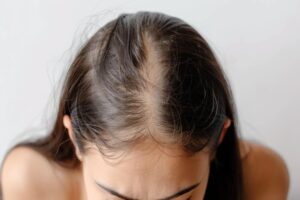
- Reasons for Seeing Bald Spots or Scalp Patches
- Areata Alopecia
- Alopecia areata, an autoimmune disease in which your immune system targets hair follicles, is one of the most prevalent causes of bald patches. Round or oval patches of smooth, hairless skin on the torso or scalp are typically where it starts. Environmental factors, stress, or genetics may cause it.
- Tinea capitis, or fungal infections
- This illness, often called scalp ringworm, results in bald patches that are scaly, irritated, and itchy, occasionally accompanied by black spots, or broken hairs. Although it is more prevalent in youngsters, adults can still be impacted. Tinea capitis needs to be treated with an antifungal medication because it is extremely contagious.
- Stress-Related Hair Loss (Effluvium Telogen)
- The body may be shocked into forcing a significant amount of hair into the resting (telogen) phase by extreme mental or physical stress, which could result in patches or diffuse shedding. Usually transient, this can get worse if stress persists.
- Alopecia Traction
- Tight ponytails, braids, or hair extensions that repeatedly strain the hair are the source of this. It causes apparent thinning or bald spots by harming the follicles over time, particularly in the vicinity of the hairline.
- Alopecia scarring
- Discoid lupus erythematosus and lichen planopilaris are two inflammatory scalp disorders that can permanently harm hair follicles, resulting in scarred hairless areas. In order to prevent irreparable loss, these require early diagnosis and timely treatment.
- How to Respond to Patches or Bald Spots
- Don’t Wait, But Don’t Panic
- Although unexpected hair loss might be upsetting, it’s imperative to consult a dermatologist or trichologist right away. Regrowth is more likely with early therapy.
- Don’t overdiagnose or overtreat yourself.
- When applied to an infected or autoimmune scalp, strong oils, frequent massages, or dandruff treatments can exacerbate the problem. Wait for a professional diagnosis at all times.
- Put an end to traction or stress-related behaviours.
- Give your scalp a rest if you think stress or tight hairstyles are to blame. Avoid heat, keep your hair loose, and use mindfulness, relaxation, or counselling to deal with stress.
- Think about a biopsy or scalp imaging.
- Dermatologists may suggest a trichoscopy or scalp biopsy to determine the precise aetiology of recurring or ambiguous cases.
- Concluding remarks
- Bald spots are a loud warning sign that anything is wrong with your scalp, which is a living ecosystem. Early diagnosis and treatment can prevent the damage from spreading, regardless of the cause—alopecia, a fungal problem, or stress-related shedding.
- Avoid mirrors and don’t conceal it with scarves. Instead, confront it head-on under medical supervision. Treating the majority of the causes of patchy hair loss can help your scalp heal and start growing hair again.
